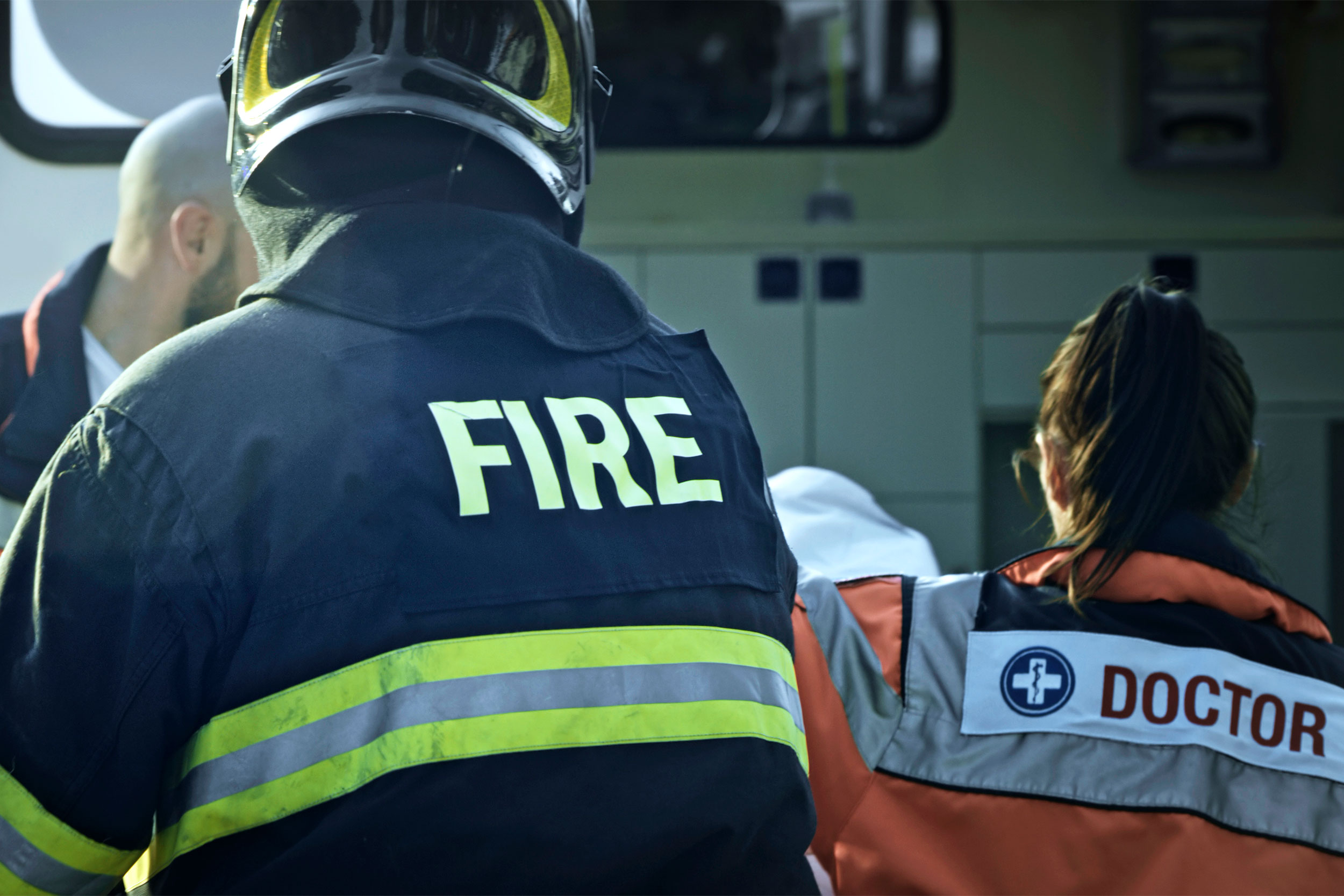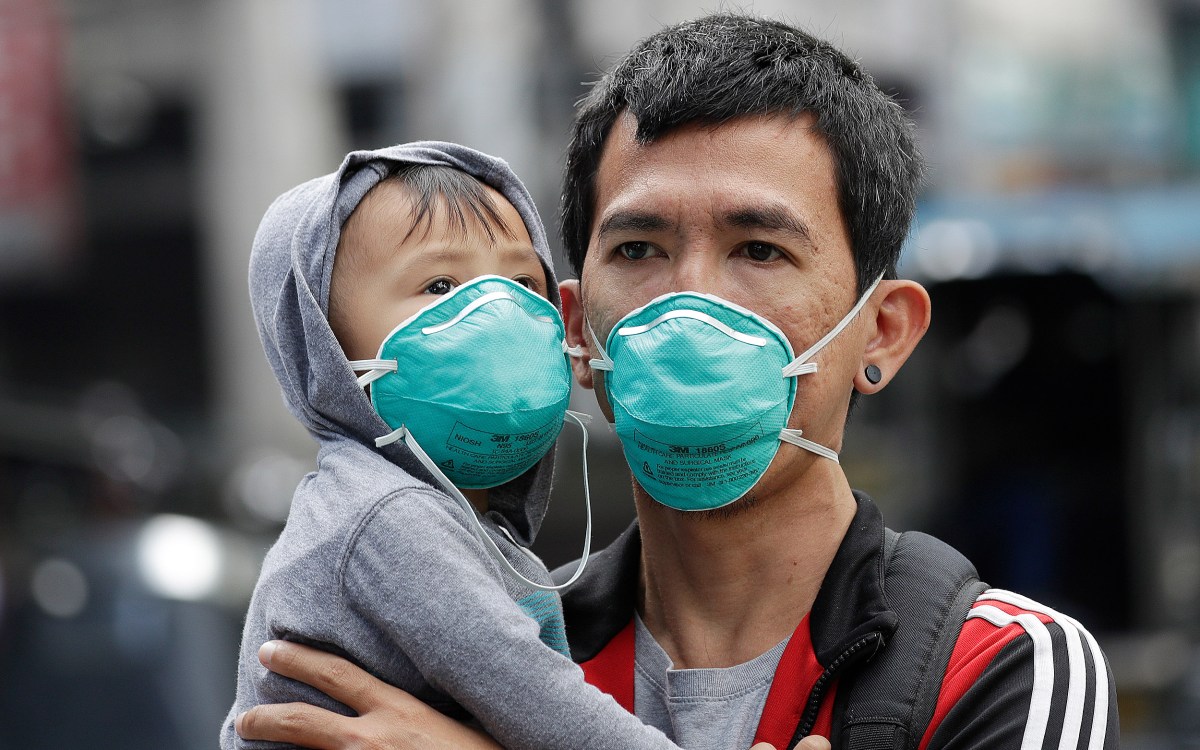
iStock
Vital challenge, for those always ready
MGH disaster expert outlines how first responders will tackle COVID-19
As the coronavirus pandemic continues to swell, first responders and emergency room personnel are squarely in the path of COVID-19. Against a backdrop of reports of tight supplies of personal protective equipment, the Gazette turned to Paul Biddinger, director of Massachusetts General Hospital’s Center for Disaster Medicine, vice chairman for emergency preparedness in MGH’s Emergency Medicine Department, and associate professor at Harvard Medical School, to describe the massive public health challenge facing police, fire, and emergency medical responders.
Q&A
Paul Biddinger
GAZETTE: You were an EMT (emergency medical technician) at one point, weren’t you?
BIDDINGER: I was. The whole reason I went into medicine was from being an EMT in New Jersey back in the ’80s. So it remains near to my heart. I work closely with a lot of first responders, and I certainly still see myself as a first responder in many ways.
GAZETTE: We’ve heard about shortages of protective equipment, but what are the major issues facing first-line responders: EMTs, police, fire, and ER [emergency room] personnel?
BIDDINGER: There’s no question that first responders have some of the greatest risks of anyone in a community-wide infectious disease outbreak like this. They respond and often are required to act with limited information, whether it’s law enforcement in a threatening situation or the fire service or EMS [emergency medical services] being asked to provide lifesaving care. They sometimes have to act before they’re able to get a full history of what the patient may be experiencing or what other risk factors, like exposure to infectious disease, they may have.
So it’s understandable that public safety workers are concerned. On top of that, the police and fire departments that don’t also provide EMS and ambulance services often have relatively little training in using medical personal protective equipment (PPE) for infectious diseases. Besides training, they may not have access to PPE on their response vehicles. Even in EMS, EMTs and paramedics have some general training on universal precautions, but may have limited access to supplies on their vehicles or limited specific training on how to use it, or both.
GAZETTE: Are there things that a responder should do routinely now? Everybody already wears gloves, right?
BIDDINGER: One thing we should be doing is strengthening our protocols at the public safety answering points — those are the people who answer the 911 calls.
During the Ebola epidemic, people started asking about travel history more than before, even for calls that didn’t sound like infectious disease — like chest pain or passing out. On 911 calls, you need to be efficient, ask questions, and get answers quickly so you don’t delay care. But they should be asking about whether anyone has fever and respiratory symptoms and whether anyone has had contact with COVID. Making this a part of how they query callers is really, really important.
GAZETTE: Should they routinely put on face masks?
BIDDINGER: There isn’t evidence that wearing one all the time is helpful. That’s true for the public, and that’s true for first responders. We worry that it actually increases their chance of self-contamination, because if the mask becomes contaminated, the longer they keep it on, the higher the risk that they may become infected by it through accidental touching or other exposures.
It would be a good idea to give law enforcement, the fire service, even EMS a clear script of two, three, four questions that they ask every time to help them identify risks. Providing them with very simple questions as they approach a scene or approach a person in need can help them identify risks very quickly. Then the script should let the police officer or firefighter know what they should do if they get a certain answer.
GAZETTE: What’s the level of concern among the people who staff the ER and the first responders out there? They deal with so much; do they get blasé after a while, or is this different?
BIDDINGER: It’s fair to say that there’s a lot of anxiety out there in all communities, and that includes the first response and the medical community. I think anytime you’re first to interact with the public there is absolutely some risk associated. And that, understandably, makes people anxious.
I think the emergency department setting is different. The emergency department has access to much better supplies, personal protective equipment, and better training. But the risk is higher because that’s where you’re asking people with symptoms to go. That’s why we provide the equipment, the training, all the resources that we do.
“There’s no question that first responders have some of the greatest risks of anyone in a community-wide infectious disease outbreak like this.”
GAZETTE: How serious is the shortage of personal protective equipment?
BIDDINGER: It’s quite serious. No one is able to get as much personal protective equipment on the market as they might like. We’ve only started to see increases in patients now, so it’s challenging to imagine how much this situation may change, with even more use of personal protective equipment, with more patients in front of us. So hopefully manufacturing will increase and keep pace with the demand. Hopefully, both at the governmental level as well as at the organizational level, policies will prevent hoarding and prevent maldistribution of personal protective equipment. But I think it remains a significant concern.
GAZETTE: You’ve already handled some of the Biogen (COVID) patients, how are things changing at MGH to address this?
BIDDINGER: We’ve been designated as a regional special pathogens treatment center by the federal government and have had procedures, policies, and training in place for these kinds of outbreaks for at least five years. But still there’s a lot that we’ve had to do.
We are having challenges purchasing as much PPE as we would like, so we meet every day with our supply-chain leaders and discuss what we’ve been able to purchase and what our usage rates are. We have had to pull back some of the inventory, meaning large quantities of things that were stocked on floors are now stocked centrally. We absolutely can supply every clinical worker with the PPE that he or she needs to do their job, but the way they get it has become a little more cumbersome, just to make sure we don’t waste. We’ve had a lot of education about the right personal protective equipment to use for the right situation.
In the midst of all this, the CDC [Centers for Disease Control and Prevention] is changing the guidelines for what PPE should be used for respiratory viral syndromes. They’re asking us to add eye protection. So we’re educating staff on the new protocol very quickly and combining that message with conservation strategies, appropriate-use strategies.
More like this
GAZETTE: Are we more prepared now than we would have been before SARS or H1N1?
BIDDINGER: Absolutely. We learned lessons about signs, that we should be taking travel history, and early in H1N1 there was an extremely important lesson because there was panic buying of personal protective equipment and hoarding. We very quickly had a N95 respirator shortage. From that experience, manufacturers and distributors developed a process of being “on allocation.” When supplies start to become short, they will only deliver amounts consistent with the historical usage of each of their customers. So customer A can’t order four times as much and then customers B, C, and D don’t get any. We’ve put some safety brakes into the system, which is quite helpful, but there has still been increased use, and supply has not kept up with demand.
GAZETTE: What advice do you have for chiefs and others on the front lines? Are there still things that they can do?
BIDDINGER: There’s a great national resource called the National Ebola Training and Education Center, NETEC. This was created in 2014‒15 for Ebola response and is focused completely on health care response to emerging infections. They have an EMS group with lots of practitioners and leaders in this area, and they’ve been producing webinars, training materials, other resources specifically for EMS.
At the leadership level, chiefs and medical directors should go there to learn what they’re recommending, see what some of their educational materials are, and they may want to adopt them for use for their staff. There’s not really much time to make major changes at departments — equipment and staff — but there is definitely time for education and awareness, and that can go a long way.
Just like with the public, we really emphasize hand-washing and awareness of touching surfaces and touching one’s face. And, for EMS, knowing how to take off your gloves correctly, knowing when to protect your eyes, those things are incredibly important. I appreciate that masks or respirators are somewhat challenging to acquire right now, but there are lots of other ways that they can limit their exposure, provide care, and keep themselves safe.








